
|
You entered: astronaut
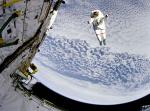 A Flying Astronaut Over Earth
A Flying Astronaut Over Earth
2.10.2001
What would it be like to fly free over the seas and clouds of Earth? In 1994 astronaut Mark Lee found out when he tested the Simplified Aid for EVA Rescue (SAFER) system for NASA. SAFER is a backpack propulsion unit that incorporates small nitrogen thrusters controlled by hand and moderated by computer.
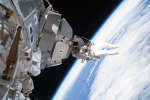 Astronaut Installs Panoramic Space Window
Astronaut Installs Panoramic Space Window
24.02.2010
This space job was almost complete. Floating just below the International Space Station, astronaut Nicholas Patrick put some finishing touches on the newly installed cupola space windows last week. Patrick was a mission specialist onboard the recently completed space shuttle Endeavor's STS-130 mission to the ISS.
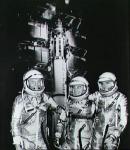 Mercury Astronauts and a Redstone
Mercury Astronauts and a Redstone
4.04.1998
Space suited project Mercury astronauts John H. Glenn, Virgil I. Grissom, and Alan B. Shepard Jr. (left to right) are posing in front of a Redstone rocket in this vintage 1961 NASA publicity photo. Project Mercury was the first U.S. program designed to put humans in space.
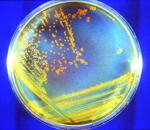 D rad Bacteria: Candidate Astronauts
D rad Bacteria: Candidate Astronauts
30.09.2002
These bacteria could survive on another planet. In an Earth lab, Deinococcus radiodurans (D. rad) survive extreme levels of radiation, extreme temperatures, dehydration, and exposure to genotoxic chemicals. Amazingly, they even have the ability to repair their own DNA, usually with 48 hours. Known as an extremophile, bacteria such as D.
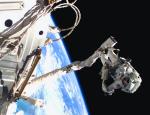 Astronaut at Work
Astronaut at Work
31.05.2000
Did you ever have a day where everything got turned around and you just couldn't tell which way was up? Fortunately, this didn't happen to astronaut James S. Voss on May 21, who spent six hours preparing to fix and upgrade the International Space Station.
 D rad Bacteria: Candidate Astronauts
D rad Bacteria: Candidate Astronauts
22.01.2006
These bacteria could survive on another planet. In an Earth lab, Deinococcus radiodurans (D. rad) survive extreme levels of radiation, extreme temperatures, dehydration, and exposure to genotoxic chemicals. Amazingly, they even have the ability to repair their own DNA, usually with 48 hours. Known as an extremophile, bacteria such as D.
 D. rad Bacteria: Candidate Astronauts
D. rad Bacteria: Candidate Astronauts
30.08.2009
These bacteria could survive on another planet. In an Earth lab, Deinococcus radiodurans (D. rad) survive extreme levels of radiation, extreme temperatures, dehydration, and exposure to genotoxic chemicals. Amazingly, they even have the ability to repair their own DNA, usually with 48 hours. Known as an extremophile, bacteria such as D.
 D rad Bacteria: Candidate Astronauts
D rad Bacteria: Candidate Astronauts
25.04.2004
These bacteria could survive on another planet. In an Earth lab, Deinococcus radiodurans (D. rad) survive extreme levels of radiation, extreme temperatures, dehydration, and exposure to genotoxic chemicals. Amazingly, they even have the ability to repair their own DNA, usually with 48 hours. Known as an extremophile, bacteria such as D.
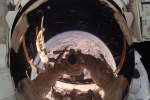 Orbiting Astronaut Reflects Earth
Orbiting Astronaut Reflects Earth
23.01.2008
Astronaut self-portraits can be particularly interesting. Visible in the above picture, working in from the outer borders, are the edges of the reflecting helmet of a space suit, modules of the International Space Station (ISS), the Earth, the arms of Expedition 15 astronaut Clay Anderson, and the digital camera used to snap the image.
 Mercury Astronauts and a Redstone
Mercury Astronauts and a Redstone
18.09.1999
Space suited project Mercury astronauts John H. Glenn, Virgil I. Grissom, and Alan B. Shepard Jr. (left to right) are posing in front of a Redstone rocket in this vintage 1961 NASA publicity photo. Project Mercury was the first U.S. program designed to put humans in space.
|
January February March April May June July |
|||||||||||||||||||||||||||||||||||||||||||||||||